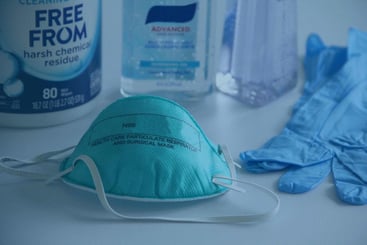Relevant Contents
Need Tailored Business Continuity Insights?
Contact Us Now for Personalized Guidance!
Unfortunately, recent news events have shown that workplaces need to do a better job of preparing for instances of workplace violence. In today’s post, we’ll share 10 steps you can take to mitigate the risk of active shooter incidents and similar events at your organization.
Related on MHA Consulting: In Time of Crisis: What to Do in the First 24 Hours
In recent years, society has learned through tragedies such as the Sandy Hook and Parkland shootings the importance of taking measures at schools to mitigate the threat of gun violence to children. Most schools now routinely conduct drills to prepare for such an event.
For whatever reason, workplaces lag behind schools in this area—perhaps out of an assumption that while children need to be protected and trained, adults will automatically know what to do. This assumption isn’t true.
The fact is, workplaces are also vulnerable. Adults also need to be drilled in what to do, and workplaces also need to be prepared. This includes the facilities you are responsible for as a business continuity professional.
10 Steps to Being Prepared
Below are 10 steps your organization can take to mitigate the risk of an active shooter incident or similar event:
- Develop an Emergency Operations Plan for every facility. Each facility should have a comprehensive EOP outlining the roles, steps, and actions the staff and any visitors should take in various emergency situations (active shooter, out of control individual, etc.). Different situations call for different EOPs. Contact your local first responders for guidance, if necessary.
- Conduct an annual risk assessment for each facility to identify relevant threats and exposures. Determine the risks to the facility and plan accordingly. First address the issues that would have the highest impact (such as an active shooter incident or fire to the building) or are the most likely to occur (tech outage, widespread absences due to illness), then move on to other threats.
- Identify and develop formal reunification sites and procedures and sites. These are pre-identified sites where employees can be assembled if they must evacuate the facility. The organization needs a plan to help get people home or to their family members. Primary and alternate sites should be chosen. Employees’ friends and family members can be informed of these sites so that they know where to pick up the employee.
- Prepare and maintain your facility for a workplace violence situation. This is an area where workplaces currently lag behind schools. Each room or area in your facility should be prepared in advance to mitigate the risk of an active violence situation.
- This might include such measures as installing window shades or door locks. Mitigation should also extend to conference rooms and training rooms.
The plan for each room should explain how to orient that room in the event of attack, for example, whether to pull the shades down or place the furniture in a certain position. These measures should be documented and the information should be kept in the room.
A good model is the fire evacuation maps mounted inside hotel rooms. Staff should be trained on these measures as well as on such information as where fire extinguishers and first aid kits are.
- All staff should receive an overview of the facility emergency management process. Staff should be trained on what to expect in an emergency, how everyone will be kept informed, and who they can contact for help and how they can reach them. This information should be part of the orientation for new hires.
- Staff should be trained on their roles and responsibilities in an emergency.
- Most likely, certain people at the facility have certain roles, such as fire marshal, first aid crew, or helper of people with limited mobility. Make sure everyone knows their assignment. Training should be given two or three times a year and to all staff, not just the leadership or crisis management teams. Most schools perform regular lockdown drills, and this is another instance where business would benefit from copying them.
- The Emergency Response Team should conduct regular disaster drills. Most facilities do not drill their emergency teams often enough.
- Tabletop exercises should be conducted a couple of times a year. A building-wide mock exercise should be performed once every one to two years.
- Develop a concise Crisis Communications plan outlining how the organization will communicate with internal and external parties during emergency events. Everyone should receive advance training concerning how they will be communicated with and how they can communicate during an incident. The method could be different depending on the event. Potential methods include flashing lights, fire alarm, text messages, or the use of code words such as the ones hospitals use (“Code Red,” “Code Blue,” etc.).
- Designate a backup method of communication. The phone system is typically the primary method. A backup method should be identified in case the phones are unusable. Commonly used backups include text messaging, intercom, email, and personal cell phones.
- Make sure the facility is prepared for an extended lockdown (one lasting more than two hours). Small items can make a big difference in terms of supporting morale, limiting stress, and promoting health and comfort. Consider the need for snacks, water, toiletries, and so on. If the facility is used by anyone needing special care (such as people with diabetes), their needs should also be taken into account. Items can be kept in a break room or storage location. There should also be a plan to allow people to communicate with the outside world in order to make sure their dependents are taken care of.
Doing What We Can
Ordinarily, we conclude these posts by saying something like, “If you just follow our recommendations, you will be all set.” In this case, the most we can say is, by taking these steps you can somewhat mitigate against the danger. This is a problem whose ultimate solution lies above the pay grade of the average BCM professional. But there are some things we can do, as outlined above, and it’s better to be somewhat prepared than not prepared at all. Past experience with this type of event shows that sometimes small protections can make a big difference.
Further Reading
For more information on this and other hot topics in business continuity and IT/disaster recovery, check out these recent posts on MHA Consulting and BCMMETRICS:
- Crisis Response in Today’s Breakneck World
- In Time of Crisis: What to Do in the First 24 Hours
- 8 Tips for Building a Good Crisis Management Team
- America’s Red Zones: Where Natural Disasters Cluster and What It Means for You
- Beyond Hurricanes: 4 Examples of Recent, Real-Life Business Emergencies
- “This Is an Emergency”: Why You Should Consider an Emergency Notification System

Richard Long
Richard Long is one of MHA’s practice team leaders for Technology and Disaster Recovery related engagements. He has been responsible for the successful execution of MHA business continuity and disaster recovery engagements in industries such as Energy & Utilities, Government Services, Healthcare, Insurance, Risk Management, Travel & Entertainment, Consumer Products, and Education. Prior to joining MHA, Richard held Senior IT Director positions at PetSmart (NASDAQ: PETM) and Avnet, Inc. (NYSE: AVT) and has been a senior leader across all disciplines of IT. He has successfully led international and domestic disaster recovery, technology assessment, crisis management and risk mitigation engagements.


